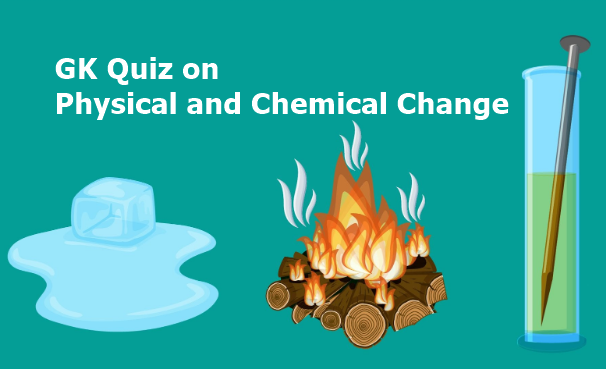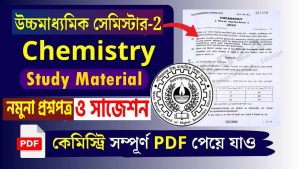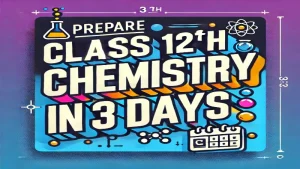Q1. Size, shape, colour, and state of a substance are examples of ________ properties.
a.) chemical
b.) physical
c.) electrical
d.) all of the above
Correct Answer – (b.) physical. Properties such as shape, size, colour and state of a substance are called its physical properties.
Q2. What type of change is the explosion of a firework?
a) Physical change
b) Chemical change
c) Reversible change
d) None of the above
Answer: b) Chemical change
Q3. Which of the following is a method to prevent rusting?
a) Keeping iron in the sun
b) Applying a coat of grease
c) Washing with water
d) Heating the iron
Answer: b) Applying a coat of grease
Q4. A physical change is generally _________.
a.) reversible
b.) irreversible
c.) both reversible and irreversible
d.) none of the above
Correct Answer – (a.) reversible.
Q5. Melting of ice is a
a)Both physical and chemical change
b)Chemical change
c)Periodic change
d)Physical change
Ans: d
Q6. What is a physical change?
a) A change where new substances are formed
b) A change in the physical properties of a substance
c) A change that is always irreversible
d) A change in which the substance’s chemical properties are altered
Answer: b) A change in the physical properties of a substance
Q7. During a physical change, a substance undergoes a change in its _________.
a.) physical properties
b.) chemical properties
c.) both (a) and (b)
d.) none of the above
Correct Answer – (a.) physical properties.
Q8. What happens to iron in the presence of moisture and oxygen?
a) It melts
b) It rusts
c) It becomes shiny
d) It breaks
Answer: b) It rusts
Q9. Which of the following is not an example of physical change?
a.) evaporation
b.) condensation
c.) boiling
d.) rusting
Correct Answer – (d.) rusting.
Q10. What is formed when magnesium oxide reacts with water?
a) Magnesium hydroxide
b) Magnesium carbonate
c) Magnesium sulfate
d) Magnesium chloride
Answer: a) Magnesium hydroxide
Q11. Which of the following is an example of physical change?
a.) burning of paper
b.) ripening of fruit
c.) cutting of wood
d.) cooking food
Correct Answer – (c.) cutting of wood.
Q12. Which of the following describes the process of depositing a zinc layer on iron?
a) Galvanisation
b) Crystallisation
c) Rusting
d) None of the above
Answer: a) Galvanizations
Q13. Which of the following is not a chemical change characteristic?
a) Change in colour
b) Change in state
c) Production of sound
d) Change in smell
Answer: b) Change in state
Q14. What kind of change occurs when the tip of the blade is placed on a gas stove?
a) Chemical change
b) Physical change
c) No change
d) Irreversible change
Answer: b) Physical change
Q15. Which of the following does not represent a chemical change?
a) Burning of leaves
b) Fermentation of grapes
c) Turning brown of freshly cut banana
d) Freezing of water
Answer: d) Freezing of water
Q16. What is a chemical change?
a) A change where the shape and size of the substance changes
b) A change where one or more new substances are formed
c) A change that is reversible
d) A change in which no new substances are formed
Answer: b) A change where one or more new substances are formed
Q17. When food spoils, it emits a foul odour as a result of a chemical change. What is the name given to this process?
a) Rusting
b) Rancidity
c) Crystallisation
d) Corrosion
Answer: b) Rancidity
Q18. What kind of change is the formation of a sugar solution?
- a) Chemical change
- b) Physical change
- c) Irreversible change
- d) Permanent change
Answer: b) Physical change
Q19. What happens when vinegar reacts with baking soda?
- a) Formation of water
- b) Formation of carbon dioxide
- c) Formation of hydrogen gas
- d) Formation of oxygen gas
Answer: b) Formation of carbon dioxide
Q20. What is the process of depositing a layer of zinc on iron called?
- a) Painting
- b) Greasing
- c) Galvanization
- d) Rusting
Answer: c) Galvanization








